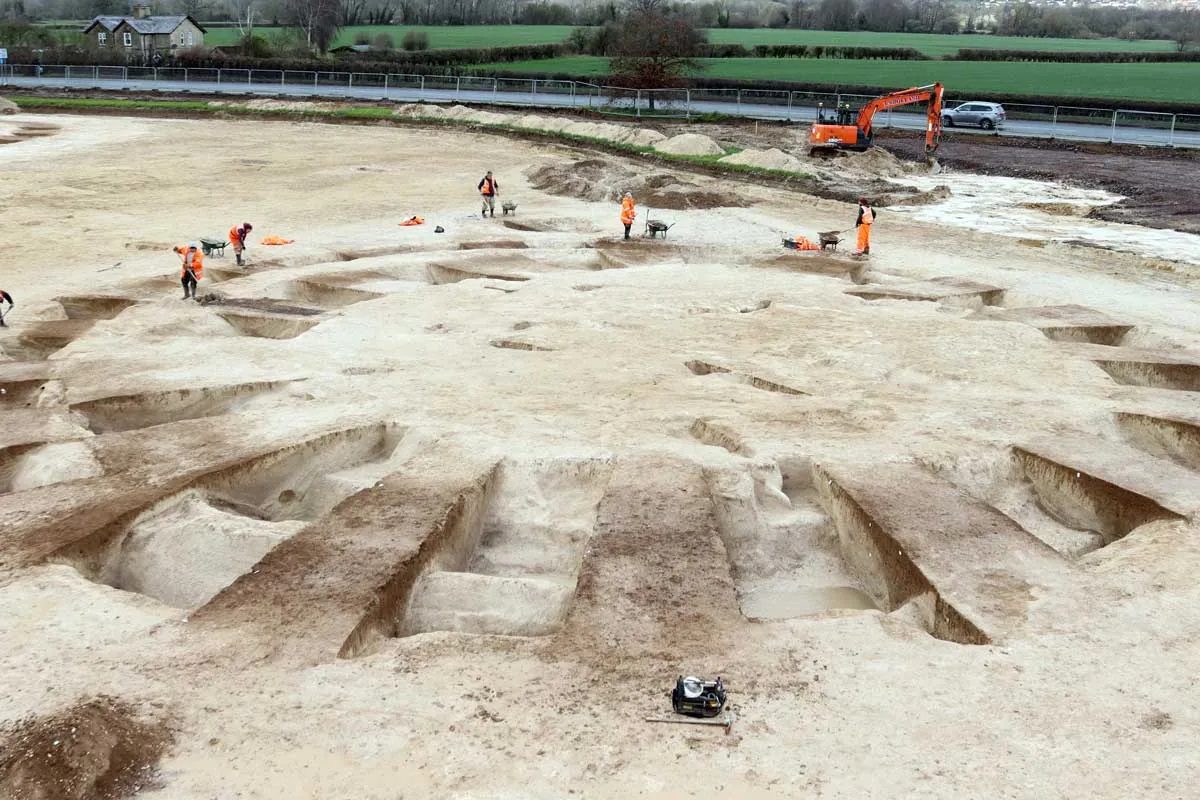A giant cemetery complex that shows signs of human activity for thousands of years has been unearthed near Salisbury in England, home to the World Heritage Site of Stonehenge. The newly found burial site is thousands of years younger than Stonehenge, but it goes to show how this area of Salisbury Plain once held huge significance to the ancient people of Britain.
The discovery was made at a planned housing development on the edge of the Salisbury suburb of Harnham by the Cotswold Archaeology team.
The project unearthed a variety of human-made structures that date from a broad variety of periods in ancient British history. Some of the round barrows are believed to have been first constructed in the Neolithic period, aka the “New Stone Age,” although most of them date to the Beaker and Early Bronze Age (2400 to 1500 BCE).
One part of the excavation revealed 20 burial mounds ranging from 10 meters to 50 meters (32 to 164 feet) in diameter, which feature an enclosing ditch. The human remains at the site have been largely destroyed due to centuries of farming cultivation, but at least 10 burials and three un-urned cremations managed to stay intact.
Archaeologists working on the central ring ditch in Area 1.
Image courtesy of Cotswold Archaeology.
Another part of the dig uncovered a cultivation terrace, most likely from the Iron Age period, as well as an area of late Bronze Age to Iron Age settlement, made up of over 240 pits and postholes.
One of the older Neolithic pits also contained a cache of red deer antlers. Researchers will be taking a close look at these bone artifacts to see whether they show any signs of modification, which might signify they were being collected to make ornaments, tools, or weapons.
Some of the remains even appear to date to the era of the Saxons, a group of northern European settlers who only arrived in England around the 5th century CE following the collapse of Roman Rule. This part of the site includes a wood building, a waterhole, Saxon pottery, iron knife blades, and possible Roman pottery.
Another view of the site as a whole.
Image courtesy of Cotswold Archaeology.
The site is located on Salisbury Plain in southern England, just 16 kilometers (10 miles) away from Stonehenge, and appears to have first stood over 1,000 years after the famous stacked rocks of the legendary neolithic monument were erected some 5,500 years old.
Stonehenge is arguably the most famous prehistoric monument in England, but it’s certainly not the only archaeological site to be found on Salisbury Plain. A handful of other Neolithic henges and cemeteries have been uncovered in the local vicinity, including a vast circle of prehistoric pits just a stone’s throw away from the most famed henge.
Source Link: In Stonehenge's Neighborhood, A Giant New Cemetery Has Been Unearthed
